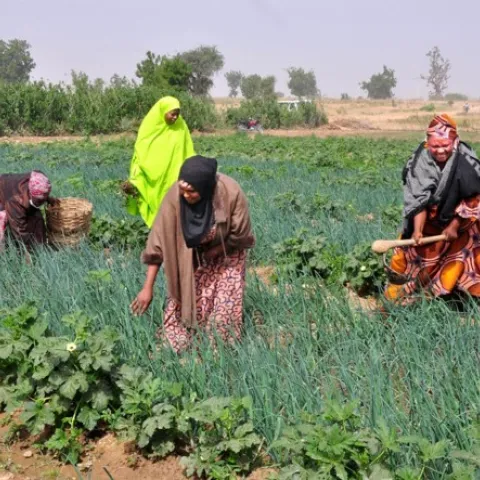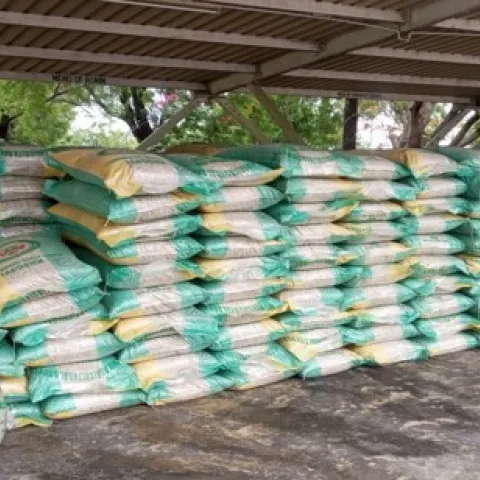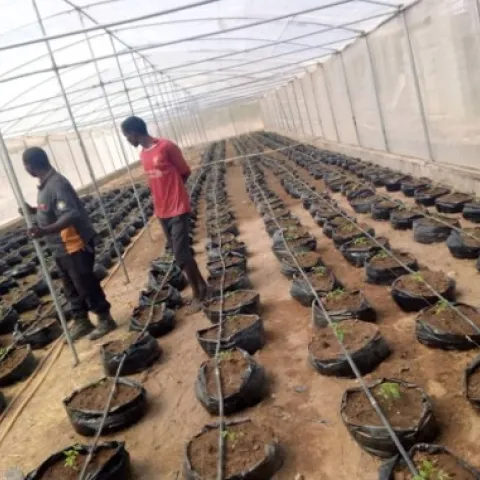Lafarge Africa’s Agric Ecology Program: Transforming Gombe’s Agricultural Landscape

In the dry, resilient plains of Gombe State, Lafarge Africa, through its subsidiary Ashaka Cement, is empowering local farmers to build capacity, support climate resilience, and thrive as a community.
Since its launch in 2018 the Agricultural Ecology Intervention in Ashaka has become one of Lafarge Africa’s most impactful community empowerment programs. Developed in partnership with the National Agricultural Extension and Research Liaison Services (NAERLS) of Ahmadu Bello University, Zaria, the initiative targets agrarian communities in Funakaye, and Akko Government Areas, which are deeply dependent on agriculture for sustenance and income.
A Multi-Dimensional Approach to Food Security and Sustainability
The program is strategically aligned with Lafarge’s Strategy 2025 – Accelerating Green Growth and its sustainability pillars: climate and energy, circular economy, nature, and people. By 2022, over 4,000 farmers had been reached, with ₦34.75 million invested directly into agricultural support, capacity-building, and input provision.
Here are the key components making a difference on the ground:
1. Capacity Building and Technical Training
Farmers received structured training on Good Agricultural Practices (GAPs), including:
- Site selection and land preparation
- Planting and crop rotation techniques
- Weed and pest management
- Post-harvest handling
- Marketing and business skills
These sessions have translated into more productive, resilient farming systems, with many participants reporting higher yields and income stability.
2. Fertilizer Relief and Demonstration Farms
In response to rising input costs, Ashaka’s Fertilizer Relief Program supported 506 farmers with essential fertilizers in 2022. Alongside this, the introduction of Mother-Baby Demonstration Plots allowed farmers to observe, replicate, and adapt new techniques in real-time. In 2022 alone, 334 farmers engaged in this demonstration network, seeing measurable improvements in crops like maize, rice, cabbage, and Irish potatoes.

3. Cluster Farming for Commercial Scale
To shift local agriculture from subsistence to commercial levels, Lafarge Africa introduced cluster farming models. In 2022, 52 farmers collaborated in this initiative, pooling land, inputs, and labor. The results included greater economies of scale, improved market access, and enhanced income through joint marketing and production planning.
4. Women’s Livestock Empowerment Scheme
Acknowledging the cultural dynamics of northern Nigeria, Lafarge launched a women-focused livestock program. In 2022:
- 60+ women received goats and sheep for backyard farming.
- Training and starter kits were provided to ensure proper animal husbandry.
- Offspring from the initial breeder stock are passed along to other women, creating a revolving livestock bank.
This initiative not only tackles gender inequality but also enhances household food security and income diversification.
5. Greenhouse Management and Innovation
To confront climate challenges, Ashaka introduced greenhouses for controlled crop production of tomatoes and peppers. These serve as practical hubs for:
- Climate-smart agriculture demonstrations
- Year-round crop production
Sustainable land use practices
Image
6. Green Field Days and Knowledge Exchange
Lafarge also hosts an annual Green Field Day, bringing together farmers to share learnings, observe innovation in action, and build community resilience through collaboration.
Sustaining Impact: From Relief to Resilience
From 2018 to 2023, the Ashaka Agric Ecology Program has empowered over 5,000 smallholder farmers, enhanced job and self-employment opportunities, and significantly contributed to food security and environmental restoration. Through intentional design, the program meets both short-term needs (such as fertilizer and input support) and long-term resilience goals (like skills development and natural resource management).
It is also deeply rooted in partnerships - with local governments, agriculture ministries, and research institutions; making it a model for inclusive, community-led development in Nigeria’s rural north.





